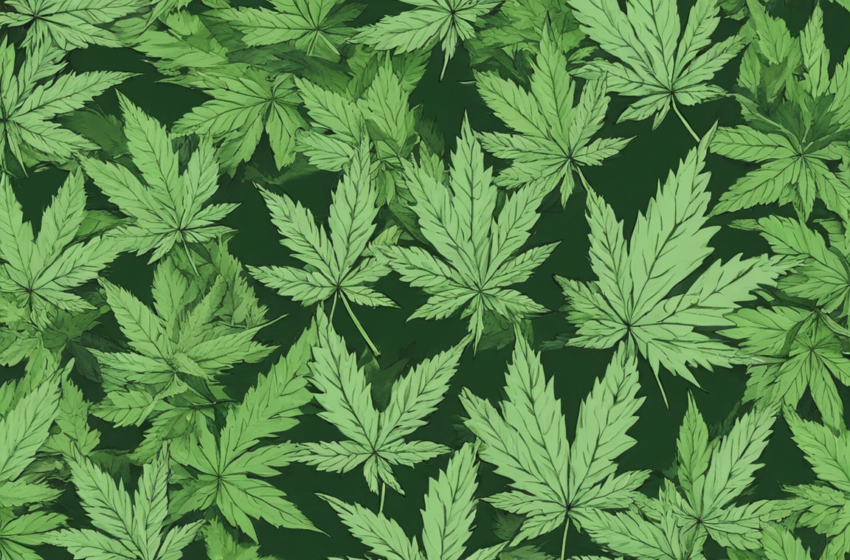Exploring the World of Pot Leaves: A Comprehensive Guide

Whether you are a seasoned cannabis enthusiast or a curious beginner, pot leaves have likely captivated your attention at some point. The iconic symbol of the cannabis plant, these leaves are not only visually striking but also hold a wealth of information about the plant itself. In this comprehensive guide, we will delve into the world of pot leaves, exploring their anatomy, functions, variations, and significance within the realm of cannabis culture.
Anatomy of Pot Leaves
Pot leaves, scientifically known as cannabis leaves, are highly distinctive in their appearance and structure. Understanding the anatomy of these leaves can provide valuable insights into the cannabis plant as a whole.
1. Leaf Shape and Structure
Pot leaves typically have a palmate shape, consisting of multiple leaflets radiating from a central point. The number of leaflets can vary depending on the cannabis strain, with most leaves having between five and nine leaflets. The edges of the leaflets may be smooth or serrated, further adding to the visual diversity of cannabis leaves.
2. Leaflet Size and Color
The size of pot leaves can also vary significantly, ranging from small, delicate leaflets to large, robust ones. Additionally, the color of cannabis leaves can provide important clues about the plant’s health and nutrient status. Healthy leaves are typically a vibrant shade of green, indicating sufficient chlorophyll levels for photosynthesis.
3. Trichome Distribution
Trichomes, tiny hair-like structures that cover pot leaves, play a crucial role in producing cannabinoids such as THC and CBD. These resinous glands are most concentrated on the surface of flower buds but can also be found on leaves, albeit in lower quantities. The presence of trichomes on leaves can hint at the potency of the cannabis plant.
Functions of Pot Leaves
Pot leaves serve several essential functions within the cannabis plant, contributing to its overall growth, metabolism, and defense mechanisms.
1. Photosynthesis
As with all green plants, pot leaves engage in photosynthesis, a process by which they convert light energy into chemical energy. This energy is used to fuel the plant’s growth and development, making photosynthesis a fundamental process for cannabis cultivation.
2. Transpiration
Pot leaves also play a role in transpiration, the process by which plants lose water vapor through tiny pores called stomata. Transpiration helps regulate the internal moisture levels of the plant, prevent overheating, and facilitate nutrient uptake from the soil.
3. Cannabinoid Production
While the primary site of cannabinoid production is the flower buds, pot leaves also contribute to the synthesis of cannabinoids like THC and CBD. The trichomes found on leaves contain these valuable compounds, albeit in lower concentrations compared to the flowers.
Variations in Pot Leaves
The world of cannabis is incredibly diverse, with thousands of different strains each exhibiting unique characteristics, including pot leaves.
1. Sativa vs. Indica Leaves
Sativa and Indica strains often display distinct leaf traits that can help differentiate between the two. Sativa leaves are typically long and slender, with thin leaflets that give the plant a more airy appearance. In contrast, Indica leaves are broader and shorter, with wider leaflets that create a denser foliage.
2. Hybrid Leaf Characteristics
Hybrid strains, which are a cross between Sativa and Indica varieties, can exhibit a wide range of leaf characteristics depending on their genetic makeup. Some hybrids may display a blend of Sativa and Indica traits, while others may lean more towards one parent strain in terms of leaf structure.
Significance in Cannabis Culture
Pot leaves hold immense cultural significance, serving as a powerful symbol of the cannabis plant and its associated subcultures.
1. Symbolism and Iconography
The iconic shape of the pot leaf, with its distinctive serrated edges and radiating leaflets, has become synonymous with cannabis culture worldwide. It is often used to signify advocacy for cannabis legalization, medicinal cannabis use, and broader countercultural movements.
2. Artistic Representation
Pot leaves have inspired a myriad of artistic interpretations, appearing in various forms of visual art, music, fashion, and literature. The ubiquitous presence of the pot leaf in popular culture underscores its enduring appeal and symbolism for generations of cannabis enthusiasts.
FAQs (Frequently Asked Questions)
1. Can you smoke pot leaves?
While pot leaves contain cannabinoids, they are usually harsh and unpleasant to smoke. It is more common to smoke the flower buds of the cannabis plant for a smoother and more flavorful experience.
2. Are pot leaves edible?
While pot leaves are not toxic, they are not typically consumed as a food source due to their bitter taste and fibrous texture. However, some cannabis enthusiasts incorporate fresh leaves into smoothies or salads for potential health benefits.
3. Do pot leaves contain THC?
Pot leaves do contain THC, but in lower concentrations compared to the flower buds. Trimming leaves from the plant can help to improve airflow and light penetration, leading to better bud development where higher THC levels are found.
4. How do you identify a healthy pot leaf?
Healthy pot leaves should be a vibrant shade of green, free of discoloration, spots, or curling edges. They should feel firm to the touch and exhibit robust growth with ample leaflets.
5. Can you make tea with pot leaves?
While it is possible to make tea with pot leaves, the results may vary in terms of flavor and potency. To extract cannabinoids effectively, it is recommended to use decarboxylated flower buds rather than raw leaves.
In conclusion, pot leaves are not merely decorative features of the cannabis plant but integral components that contribute to its growth, cannabinoid production, and cultural significance. By understanding the anatomy, functions, variations, and symbolism of pot leaves, enthusiasts can deepen their appreciation for the remarkable diversity and complexity of the cannabis plant.